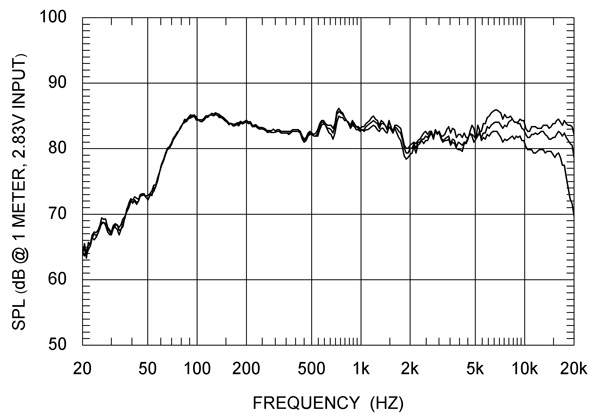Thanks for the reply,
The image is from Dynaudio excite 12, the freq. variation is slight over 15 to 30 deg off axis, this I assume is what you mean, furthermore, the dip at 2khz is a matter of taste and does not matter that much.
Another issue I found that most well received/reviewed 2way bookshelf speakers have a peak at 100Hz and a valley between 100Hz to 1kHz like the image attached.
So if we design a 2-way speaker in accordance to these 2 criteria(and a few others like smooth impedance and minimum phase variations(impt?)) then we have a pair of good sounding speakers.
Also refer to the image, the peak at 750Hz can we hear it?
